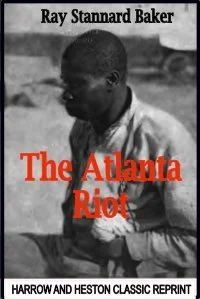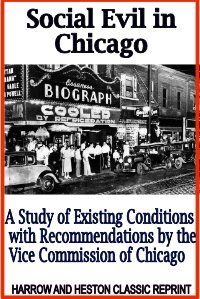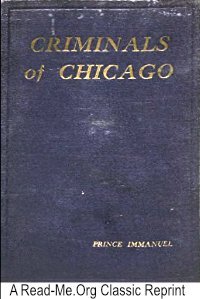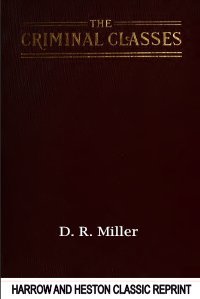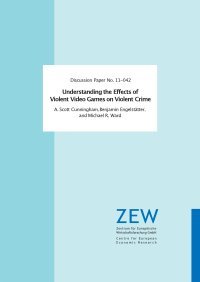By pages
The Mystery of the Unborn, by pages. “Dr. Wilson believed that criminals are born unfinished. The die is cast at birth. The lack of finish at birth explains the incompetent, the born tired, the unemployed. Then what is the use? Why not painless extinction of those who commit great crimes, and the sterilization of the feebleminded….” Albert Wilson.
John Bale et al., (1928) 477.
By Prince Emmanuel of Jerusalem.
“ History shows that hanging did not prevent petit larceny. So we have abandoned the policy of frightfulness in punishment and cannot revert to it even though it still has some few supporters. And yet we feel that the theory of punishment being deterrent is philosophically sound. …The first news from the Laboratory revealed the prevalence of feeble-mindedness among delinquents. “
Rosburgh Publishing (1921) 247 pages.
By D. R. Miller.
“A law demanding only a refrain from violence or abstinence from all that may injure others contains but the negative, while it is lacking in the more important, the positive elements. If men, by closing their eyes to the existence of evil, could thereby banish it, then might it be best for all to close their eyes….it is quite certain that we can never hope to discover, through ignorance, what are the various types of criminal abnormality, nor know the many causes or cures for such estrangements. An intelligent and thorough study of the criminal problem will eliminate from our creed that fatalistic formula which asserts that ‘Evil is good not understood’…”
United Brethren Publishing House (1903) 224 pages.
By Carl Murchison.
“This material is offered for the special consideration of lawyers, psychologists, siociologists, social workers, and all those who have to do with the formulation of criminal law, the treatment of criminals, and the molding of public opinion concerning the enemies of organized society…”
A Read-Me.Org Classic Reprint (1926) 483 pages.
By Filson Young.
With notes and introduction by Filson Young. “Most of the interest and part of the terror of great crime are due not to what is abnormal, but to what is normal in it; what we have in common with the criminal, rather than that subtle insanity which differentiates him from us, is what makes us view with so lively an interest a fellow-being who has wandered into these tragic and fatal fields.”
William Hodge (1910) 266 pages.
By Clarence Darrow.
“The physical origin of such abnormalities of the mind as are called ‘criminal’ is a comparatively new idea….It has not been long since insanity was treated as a moral defect….”My main effort is to show that the laws that control human behavior are as fixed and certain as those that control the physical world…”
Thomas Crowell Pubs. (1922) 225 pages.
By Ida Well-Barnett.
“Immediately after the awful barbarism which disgraced the State of Georgia in April of last year, during which time more than a dozen colored people were put to death with unspeakable barbarity, I published a full report showing that Sam Hose, who was burned to death during that time, never committed a criminal assault, and that he killed his employer in self- defense.”
Harrow and Heston Classic Reprint (1892) 63 pages.
By Horace M. Kallen.
A Manual for Judges, Practitioners, and Students, by Hans Gross. Translated from the 4th German edition . Introduction By Joseph Jastrow,. “ In short, the individualization of disease, in cause and in treatment, is the dominant truth of modern medical science. The same truth is now known about crime…” Published under the Auspices of The American institute of criminal law and criminologyBoston,
Little Brown and Co. (1911) 567 pages.
Translated by Gina Lombroso.
This is the classic work of the “father of criminology” Cesare Lombroso translated from the Italian by his daughter Gina Lombroso. Here was the idea of the “born criminal” and a detailed classification system according to body types and other physiological and physical features. The major work was “L’Uomo delinquente” that emphasized the atavistic origins of criminality.
NY. Harrow and Heston Classic Reprint. (1876) 251 pages.
By Raffaele Garofalo.
Garofalo, a student of Lombroso, attempted to formulate a sociological definition of crime that would designate those acts which can be repressed by punishment. These constituted "Natural Crime" and were considered offenses violating the two basic altruistic sentiments common to all people, namely, probity and piety.
A Read-Me.org Classic Reprint. 1885. 510 pages.
By Thiess Büttner, and Hannes Spengler.
The paper revisits the local determinants of crime using a spatial model distinguishing between resident and non-resident offenders. Employing data for German municipalities, the model is estimated by means of a spatial GMM approach. Focusing on resident offenders legal earnings opportunities and the expected gain from offenses are found to be important determinants of crime. Also the socio-economic background in terms of unemployment, poverty, and inequality proves significant for both property and violent crime. Whereas local inequality only shows an effect on crime committed by resident offenders, crime committed by non-resident offenders is shown to be significantly related to the characteristics in adjacent municipalities such as unemployment and income.
Mannheim: ZEW – Leibniz Centre for European Economic Research, 2003. 30p.
By Benjamin Engelstätter, A. Scott Cunningham, and Michael R. Ward.
Most psychological studies report a positive relationship between violent video game play and aggression. In line with that researchers and policy makers alike understand playing violent video games as contributing factors to increased aggression in teenagers and young adults including, perhaps, high school shootings. However, laboratory studies are unable to account for either the possible selection of relatively violent people into playing violent video games or foregone aggressive effects of alternative activities video game playing may substitute for. Specifically, psychological laboratory experiments cannot address the time use effects of video games which tend to incapacitate gamers from violent activity, e. g. crimes, by drawing them into extended gameplay. Accordingly, laboratory studies may be poor predictors of the net effects of violent video games on society, thus potentially overstating the importance of video game induced aggression. We argue that as both a behavioral tendency toward aggression and incapacitation from aggression are consequences of playing violent video games, the policy relevance of violent video game regulation depends critically on the degree to which one outweighs the other. We empirically investigate how video games could affect crime using four years of weekly data from the US by matching four different data sources. The number of violent and nonviolent crime incidents each week we obtain from the National Incident Based Reporting System (NIBRS). Our measure for video game play is derived from VGChartz which report the unit sales of the top 50 video games across the US each week. To determine the violent content of each game, we collect information from the Entertainment Software Rating Board (ESRB). This nonprofit body rates the appropriateness of games and provides detailed content descriptions for each game including the degree of violence. To control for unobserved factors that might influence both crime rates and video game play like, e. g., bad weather such as rain or heavy snow, we focus only on changes in game sales associated with differences in game quality as measured by Gamespot, a professional video game rating board (instrumental variable approach). Our results indicate two opposing effects. They suggest the behavioral effects in line with the psychological studies. If not for the incapacitation effect, violent video games would be associated with more violent crimes. However, the results also support a voluntary incapacitation effect in which playing either violent or non-violent games decrease crimes. Sales of either violent or non-violent games are associated with decreased violent and non-violent crime. The incapacitation effect dominates the behavioral effect such that, overall, violent video games lead to decreases in violent crime.
Mannheim: ZEW – Leibniz Centre for European Economic Research, 2011. 47p.


